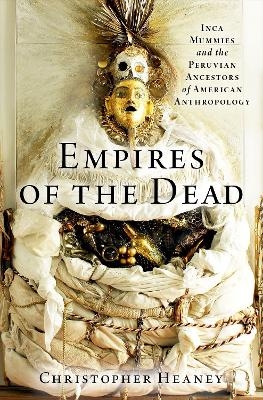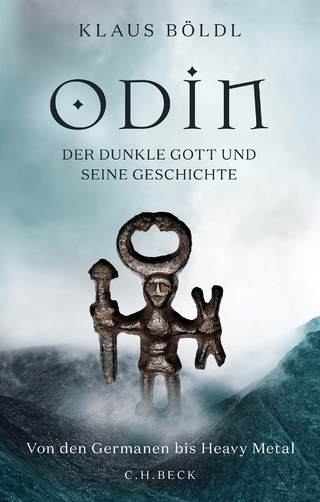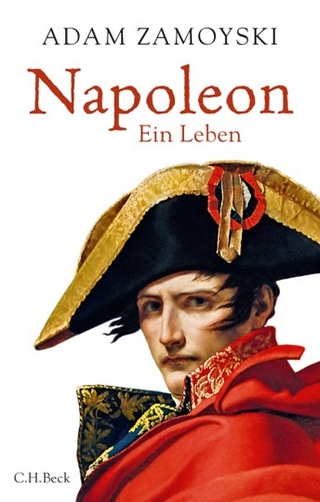
Empires of the Dead
Oxford University Press Inc (Verlag)
978-0-19-754255-2 (ISBN)
When the Smithsonian's Hall of Physical Anthropology opened in 1965 it featured 160 Andean skulls affixed to a wall to visualize how the world's human population had exploded since the birth of Christ. Through a history of Inca mummies, a pre-Hispanic surgery called trepanation, and Andean crania like these, Empires of the Dead explains how "ancient Peruvians" became the single largest population in the Smithsonian and many other museums in Peru, the Americas, and beyond.
In 1532, when Spain invaded the Inca empire, Europeans learned that Inca and Andean peoples made their ancestors sacred by preserving them with the world's oldest practices of artificial mummification. To extinguish their power, the Spaniards collected these ancestors as specimens of conquest, science, nature, and race. Yet colonial Andean communities also found ways to keep the dead alive, making "Inca mummies" a symbol of resistance that Spanish American patriots used to introduce Peruvian Independence and science to the world. Inspired, nineteenth-century US anthropologists disinterred and collected Andean mummies and skulls to question the antiquity and civilization of the American "race" in publications, world's fairs, and US museums. Peruvian scholars then used those mummies and skulls to transform anthropology itself, curating these "scientific ancestors" as evidence of pre-Hispanic superiority in healing.
Bringing together the history of science, race, and museums' possession of Indigenous remains, from the sixteenth century to the twentieth, Empires of the Dead illuminates how South American ancestors became coveted mummies, skulls, and specimens of knowledge and nationhood. In doing so it reveals how Peruvian and Andean peoples have learned from their dead, seeking the recovery of looted heritage in the centuries before North American museums began their own work of decolonization.
Christopher Heaney is an Assistant Professor of History at the Pennsylvania State University. He is the author of Cradle of Gold: The Story of Hiram Bingham, a Real-Life Indiana Jones and the Search for Machu Picchu. He has written for the New Yorker, the Atlantic, the New York Times, and other publications, and was the co-founder of The Appendix, a journal of narrative and experimental history.
A Note on Orthography
A Note on Images
Introduction: Death's Heads: Humanity's Peruvian Ancestors at the Smithsonian
Part 1: Opening, 1525-1795
1. Curing Incas: Andean Lifeways and the Pre-Hispanic Imperial Dead
2. Embalming Incas: Huayna Capac's Yllapa and the Spanish Collection of Empire
3. Mummifying Incas: Colonial Grave-Opening and the Racialization of Ancient Peru
Part 2: Exporting, 1780-1893
4. Trading Incas: San Martín's Mummy and the Peruvian Independence of the Andean Dead
5. Mismeasuring Incas: Samuel George Morton and the American School of Peruvian Skull Science
6. Mining Incas: The Peruvian Necropolis at the World's Fairs
Part 3: Healing, 1863-1965
7. Trepanning Incas: Ancient Peruvian Surgery and American Anthropology's Monroe Doctrine
8. Decapitating Incas: Julio César Tello and Peruvian Anthropology's Healing
9. The Three Burials of Julio César Tello; or, Skull Walls Revisited
Epilogue: Afterlives: Museums of the American Inca
Acknowledgments
Notes
Bibliography
Index
| Erscheinungsdatum | 26.07.2023 |
|---|---|
| Zusatzinfo | 50 black and white halftones and 15 color illustrations |
| Verlagsort | New York |
| Sprache | englisch |
| Maße | 236 x 165 mm |
| Gewicht | 744 g |
| Themenwelt | Geisteswissenschaften ► Archäologie |
| Geisteswissenschaften ► Geschichte ► Regional- / Ländergeschichte | |
| Sozialwissenschaften ► Ethnologie | |
| Sozialwissenschaften ► Soziologie | |
| ISBN-10 | 0-19-754255-7 / 0197542557 |
| ISBN-13 | 978-0-19-754255-2 / 9780197542552 |
| Zustand | Neuware |
| Informationen gemäß Produktsicherheitsverordnung (GPSR) | |
| Haben Sie eine Frage zum Produkt? |


